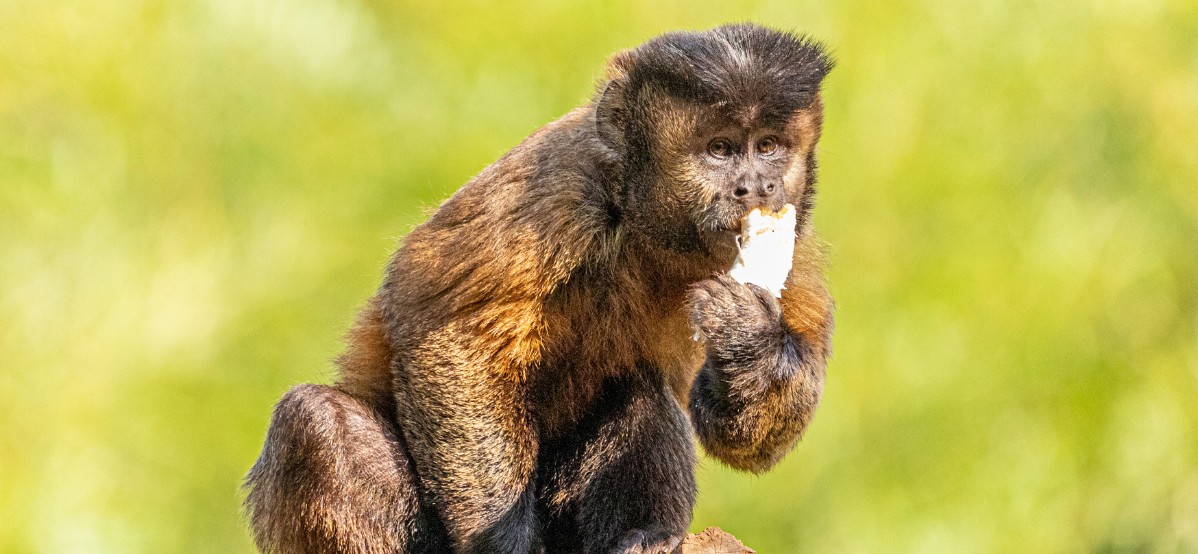On another occasion, we already talked about the forest in the backyard of our unit in Estância Velha/RS. In this vast area, among the predominance of leafy trees there is also a great diversity of native wild animals. We often see some peculiar inhabitants. Today, we will talk especially about capuchin monkeys.
These primates are of the species Sapajus nigritus, endemic to the Atlantic Forest, occurring in southern and southeastern Brazil, as well as in northeastern Argentina. They are medium-sized mammals, with a body measuring between 42 and 56 cm, and a tail measuring between 51 and 56 cm. Adult individuals weigh between 2 and 4 kg. They have a very diversified diet, feeding on bird eggs, small vertebrates, sap, leaves, bulbs, seeds, fruits and insects. They live in stable groups of 6 to 30 individuals, depending on environmental conditions, and their habits are generally diurnal.
The species plays a fundamental role in at least two important ecological processes: dispersing seeds in the forests where it inhabits and controlling the population of undesirable insects.
Many studies are carried out in this group of primates, due to their great cognitive capacity, including skills in using tools in nature, as well as cooperation between individuals and other interesting social behaviors.
Due to the reduction of natural environments, the sighting of these monkeys in urban and rural areas has become common in search of food. This makes them exposed to human and domestic animal attacks. Given these negative impacts, it is not recommended to feed them in the wild.
The preservation and expansion of native forests, along with the development of ecological corridors, are great allies in the conservation of this and many other species of our fauna and flora.
By cooperating with the environment where we live, we contribute to the quality of life and take another step towards the development of a more sustainable society.
Source of information: ICMBIO, Digital Fauna UFGRS, Cerrado Museum, Embrapa






